Up here, more than 2,000 feet up, the ridge gleams with snow, even when it’s raining in the valley. Balsam fir and spruce are coated in ice, and red maple and birch bend under the weight.
It’s a rare place, especially in Massachusetts. Aimee Gelinas and Daniel Cohen live in an island of Boreal forest, evergreens and moose, an ecosystem they feel is increasingly threatened by climate change — and vital in slowing it.
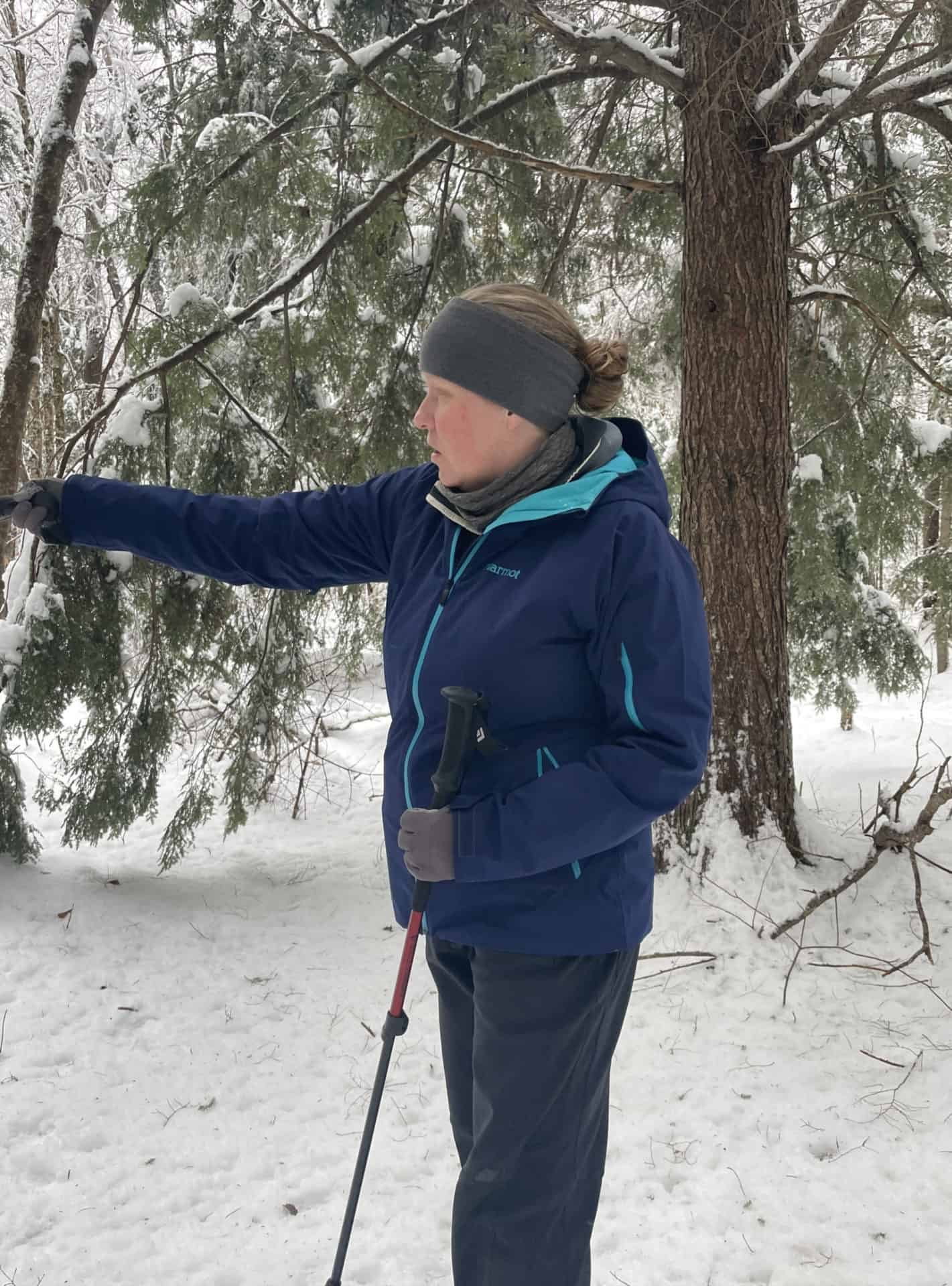
Aimee Gelinas snowshoes on a new trail in the boreal forest at Tamarack Hollow.
And they have taken steps to protect it. Late last fall they saw a realtor walking the boundary line just across the road. She was looking for the pins and taking photos to post online. They came out to talk with her. And then they moved fast.
As co-founders of the Tamarack Hollow Nature Center, for the past 10 years Gelinas and Cohen have dedicated their lives to preserving the land around them — and this winter, their charge has doubled in size.
‘Boreal forests are one of the biggest sequestors of carbon in the world.’ — Aimee Gelinas
“I made some quick calls and held an emergency board meeting,” Gelinas said, “and we put an offer in, and so (the land) went up online as pending. Because it could have turned into a bidding war or … God knows.”
Her energy has seen results. With these 30 acres, Tamarack Hollow now preserves a stretch of 62 acres along the whole of the northern border of Notchview — 3,000 acres held by the Trustees of Reservations — and a central tract of a high elevation wetland surrounded by the Savoy and Eugene Moran Wildlife Management areas.
Here in the homelands of the Mohican people, they are helping to reunite these high forests.
“To me it felt like we put the land back together,” Gelinas said.
‘To me it felt like we put the land back together.’ — Aimee Gelinas
She and Cohen feel thankful to steward this land in their lifetimes and for the future, they said, and to move when the chance came.
They have been planning for years now to grow their land conservation and programming, they said — they are also raising funds for a matching grant from the Massachusetts Cultural Council to build an indoor space for the Nature Center — a small, sustainable structure with a light footprint — so that school classes can keep dry and snowshoers can get warm.
They are planning for a space to hold workshops and music classes and teach people simply to see and hear the woods around them.
Mountain craft
Tamarack Hollow also offers crafts made from the mountain — they harvest and wild craft the Balsam resin, Balsam needles, Spruce tips and Spruce needles to create balsam fir balm, evergreen blend sachets, spruce soaking salt and more.
They also have cards and nature photogrpahs, jewelry, books, percussion isntruments and music. You can find them at local craft shows, at Tamarack Hollow programs and by email, aimee@gaiaroots.com
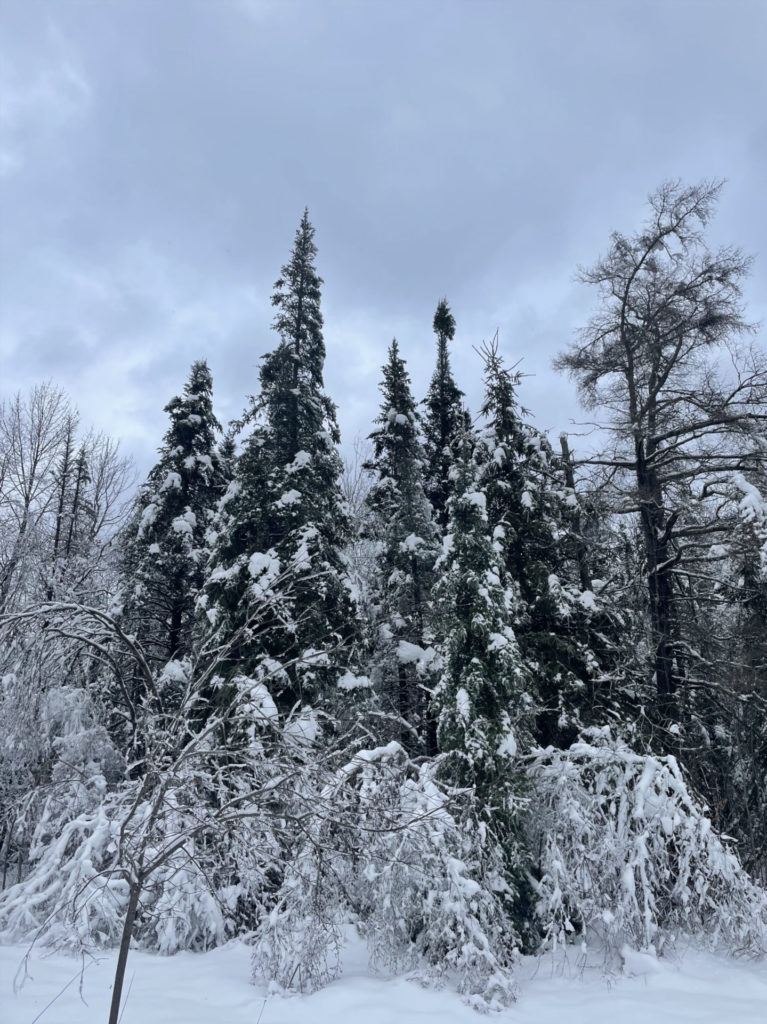
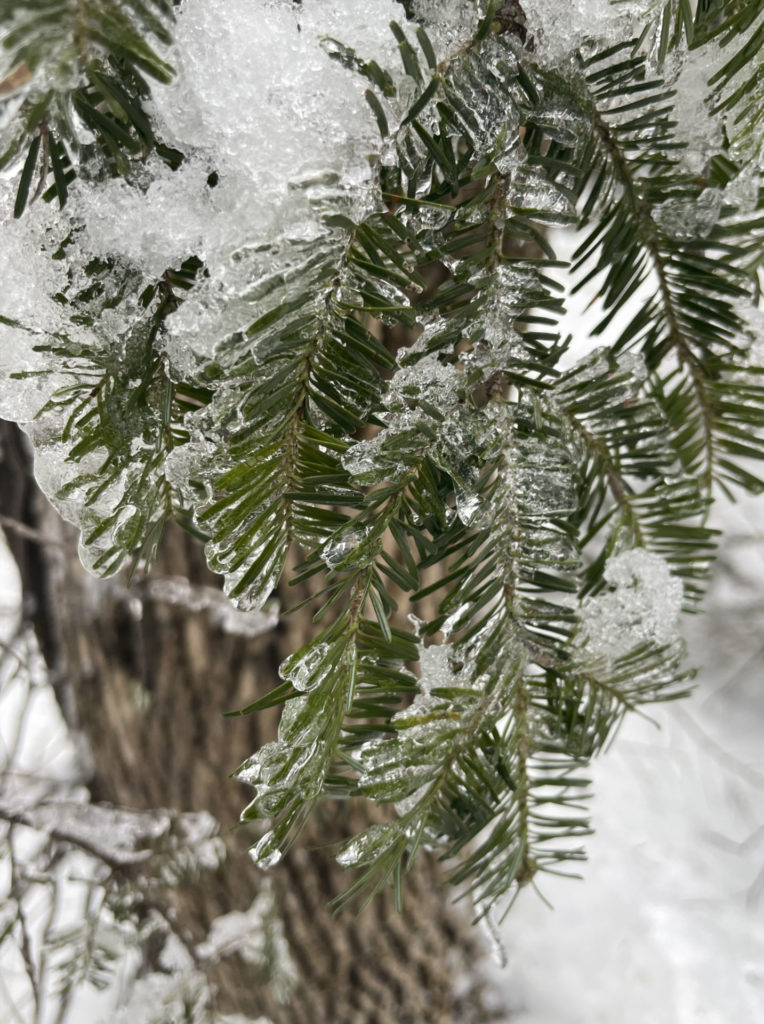
Balsam fir stand tall on the ridge at Tamarack Hollow, and hemlock needles gleam in ice.
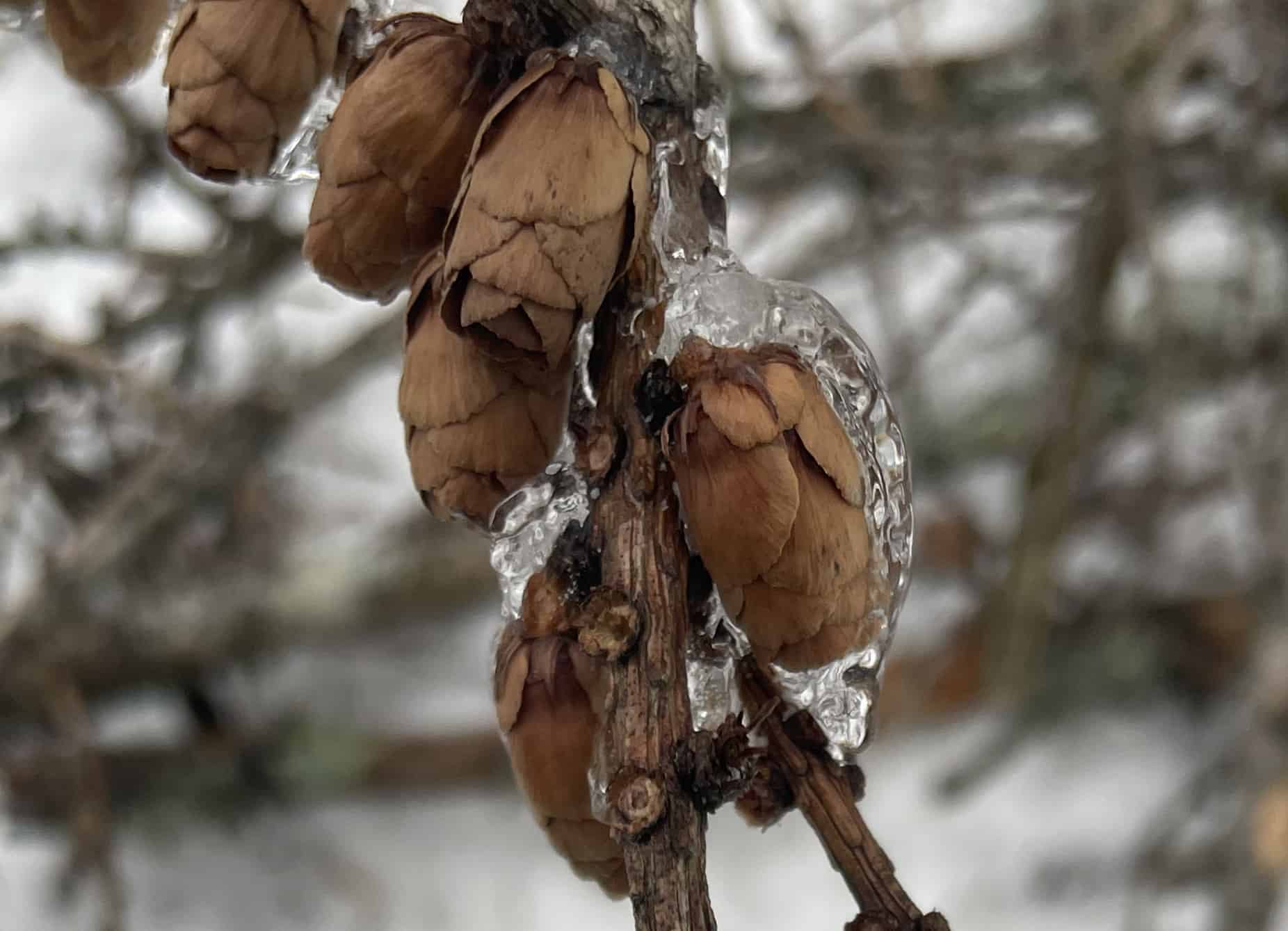
Cones of Tamarack (or hackmatack, or larch) show coppery under the ice at Tamarack Hollow in Windsor.
The Boreal forest ecosystem is usually found farther north, Gelinas said, in Canada and Scandinavia and places closer to the pole. This far south, they appear only at elevations above 2,000 feet, on the highest peaks.
Coming out after a winter storm, she and Cohen may see snowshoe hare or ruffed grouse, or a porcupine tasting hemlock needles. Many of the plants and animals around them are adapted to live in these colder places, they said, and warmer temperatures are putting them under increasing pressure.
Protected land can give birds and animals a breadth of space, to live and move, find food and have young, and an intact forest can fight off disease more effectively, just as a healthy person can.
‘We’re keeping intact land that holds a lot of snow, and the snow is what cleanses our environment.’ — Aimee Gelinas
This new stretch of 30 acres is rare in another way, they said. It crosses the Drowned Lands — a stretch of high-elevation wetland, home to red maple and sphagnum moss, mink and winter wren, viburnum, wild orchids and great blue heron.
This habitat is vital for the plants and animals who live here and for the ways the wetland itself protects and nourishes places around it. The water filters down Drowned Land Brook, Gelinas said, into Notchview and down into the Westfield River, and spills over into Windsor Jambs and Wahconah Falls.
“Wetlands are what feed our rivers and streams,” she said.
“And how about springs,” Cohen agreed, “water underneath the ground.”
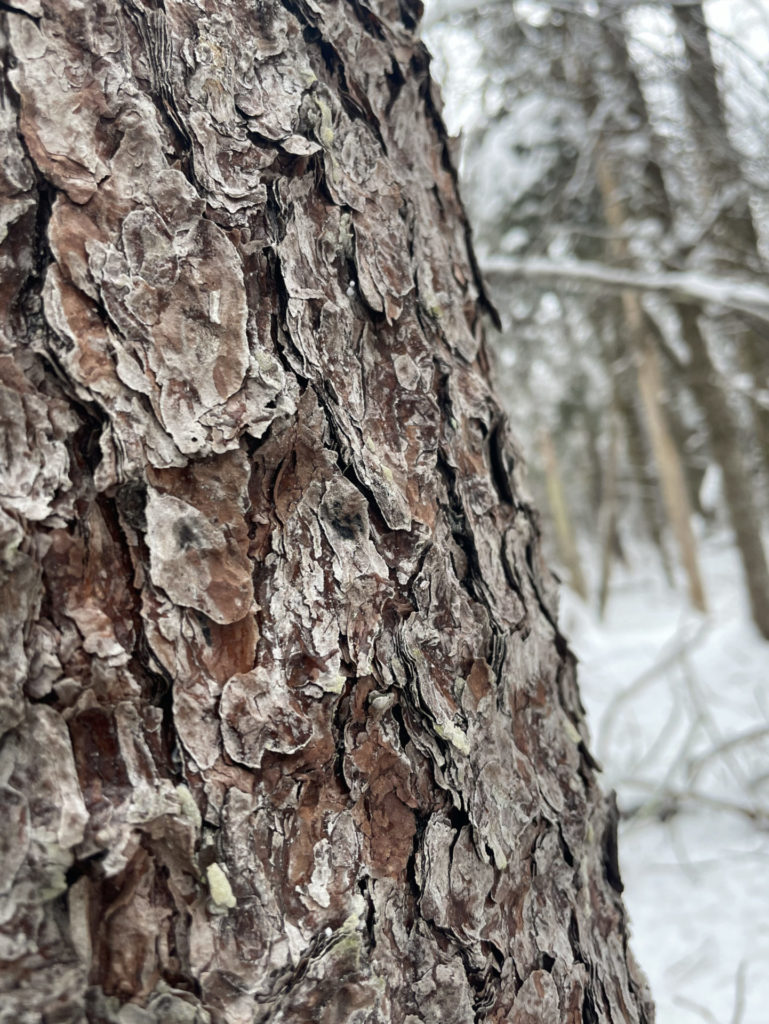

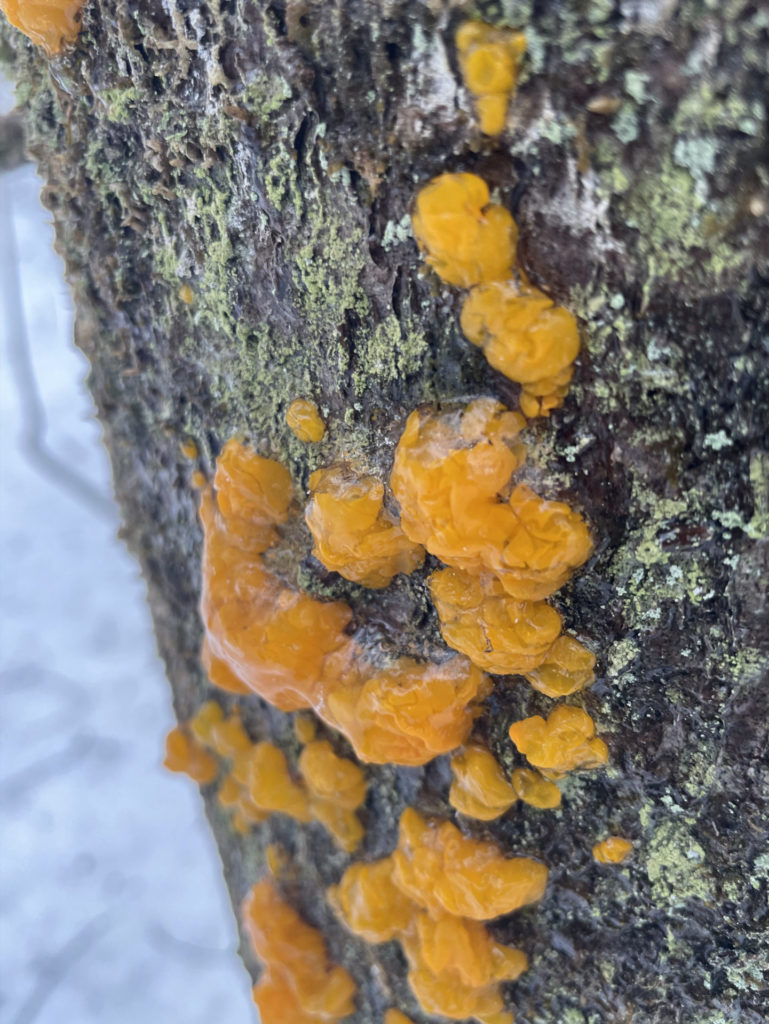
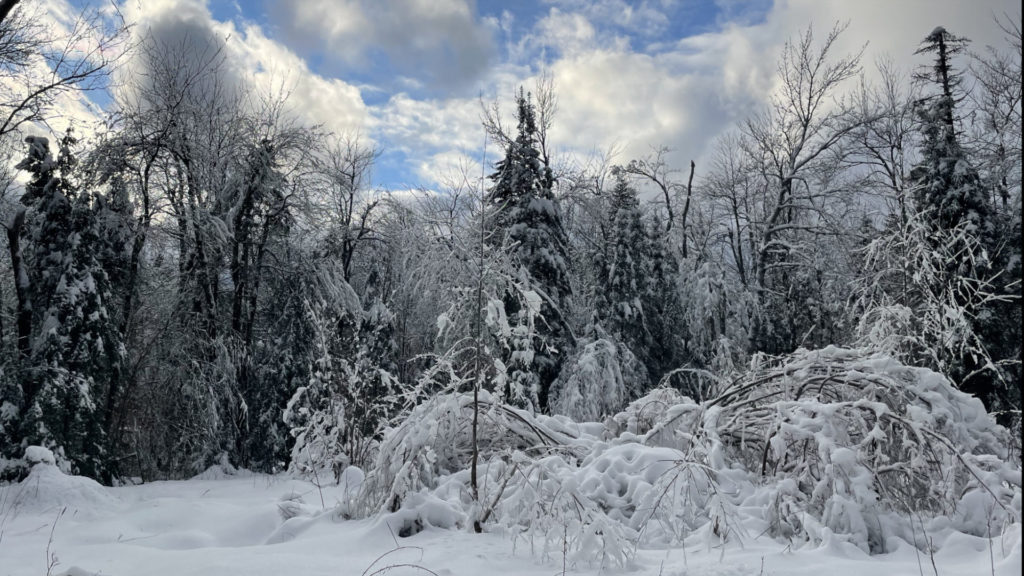


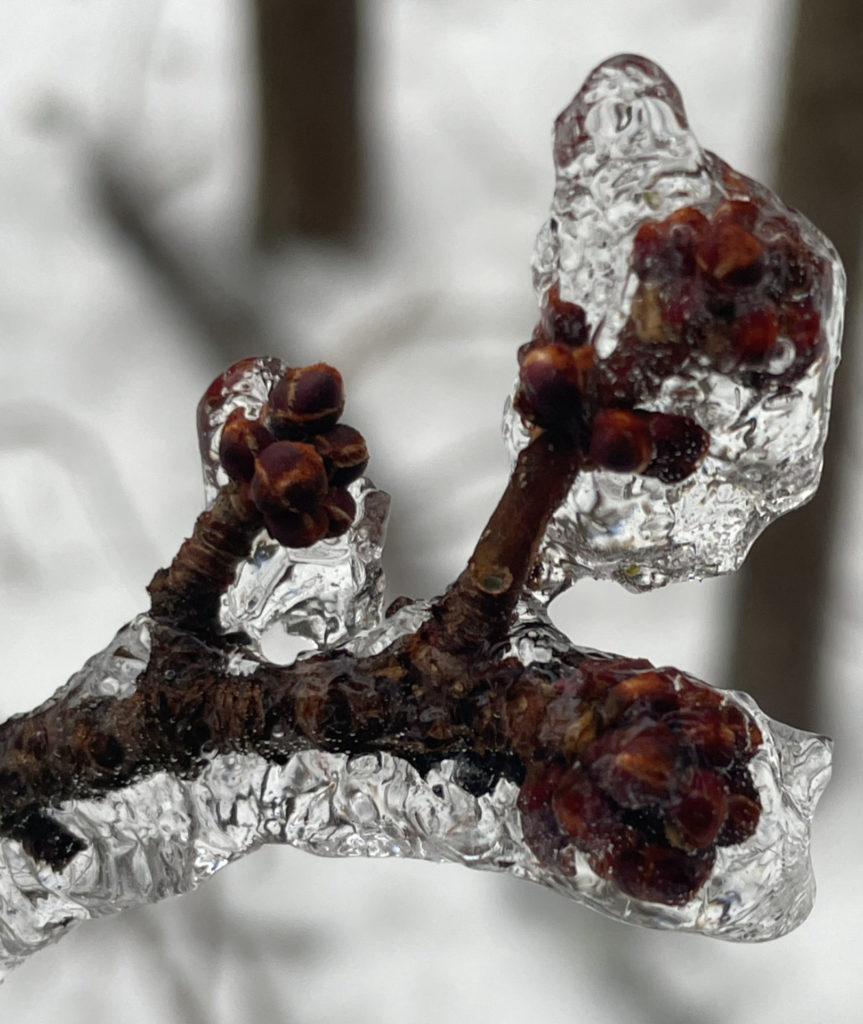
Tamarack bark shows silvery patterns, top left, and lichens grow at high elevations. A jelly fungus, witches’ butter, glistens orange even in the cold, and ice encases spruce needles and the buds on a red maple.
“And (we’re) also keeping intact land that holds a lot of snow,” she said. “The snow is what cleanses our environment. I’ve just been doing research into the amount of nitrogen that is held in snow … and it seeps slowly back into the soil.”
Snow pulls nitrogen from the atmosphere as the flakes come down, she explained, and so it nourishes the soil — a rainstorm sweeps through, but snowmelt seeps into the ground and helps to replenish minerals in the earth. Plants absorb the minerals, and they feed birds and animals (and dragonflies and moths …)
She can see the difference in the ecosystems, she said, between the wetland on one side of the road and the stream on the other — especially in the heat.
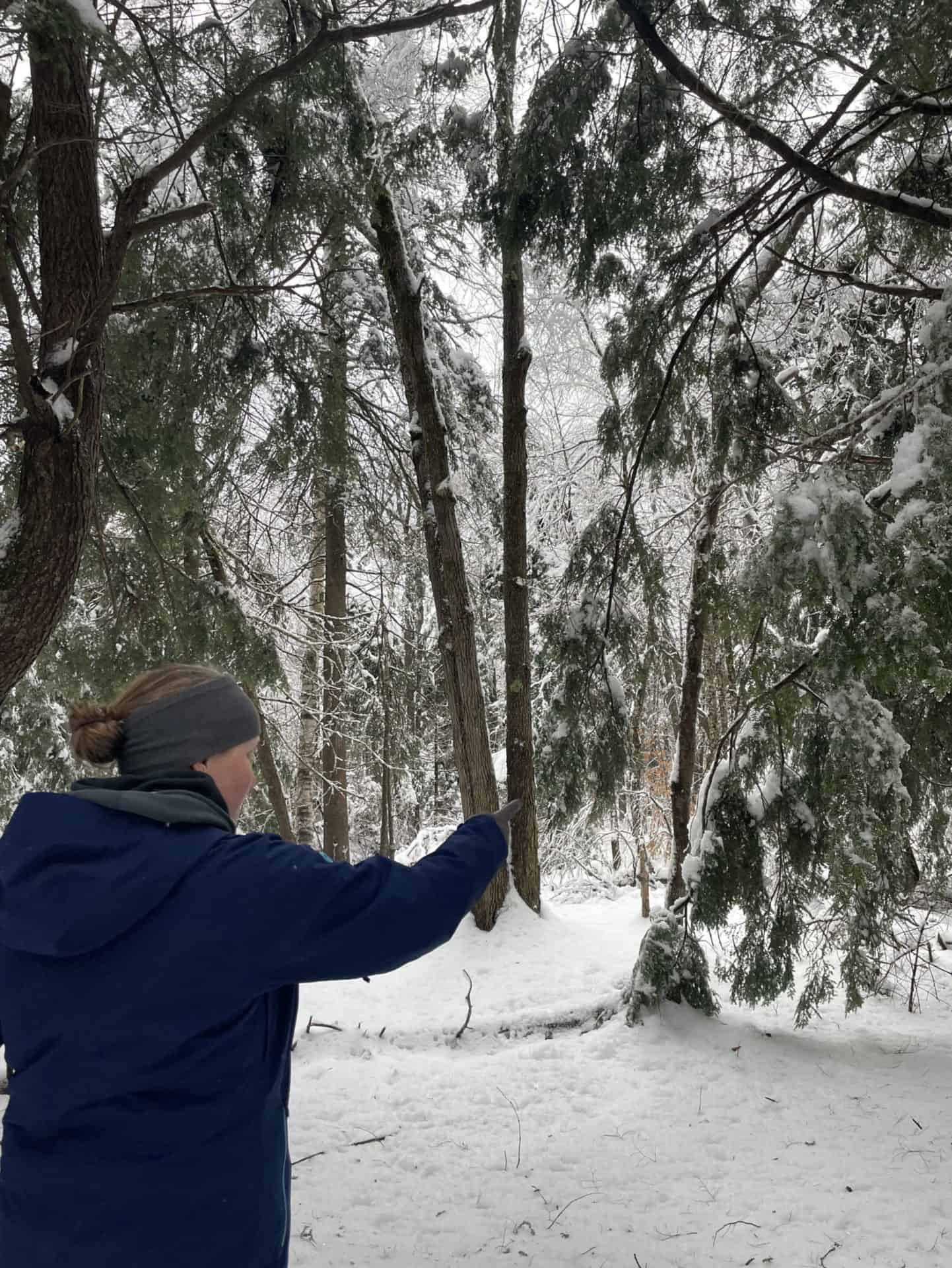
Aimee Gelinas snows the needles of hemlock trees in the boreal forest at Tamarack Hollow.
“Our stream was bone dry this summer,” she said, “but you know what wasn’t bone dry? The beaver ponds up the road. The beaver were the heroes of the last few droughts we’ve had — this summer, all the animals were up at the beaver ponds.”
The firs like the moisture too, and they also can play a broader role in the lives around them.
“Balsams are short-lived trees,” Cohen said. “When they’re 80 to 100 they get to a certain point and they die, and then they drop. In the 10 to 15 years we’ve been here, I’ve seen pockets where they’re really big, and they’ve died down, and then we’ve got a bunch of younger ones come up. That’s probably the biggest turnover.”
And because of that life cycle, Gelinas said, boreal forests play a strong role in balancing the atmosphere and slowing climate change. They are one of the biggest sequestors of carbon in the world.
For people day to day, they can also be a place to rest in hard times.
Gelinas rested on her snowshoes, looking up at the cone of a fir tree half-encased in ice. Earlier that morning, she said, she and Cohen had walked into Hoosac High School, and a student had run up to them grinning and calling their names.
“He’s like ‘Oh my God, Amy and Dan, it’s Joey, remember me?’” she said, “— and I’m thinking, I remember you being this tall —” (holding her hand a few feet off the snow).
She and Daniel had taught him years ago in programs with the youth center. And he told her, “You’re one of the reasons I go out and explore nature.”
He walks in his back yard, he told them. He has built a bridge, because Tamarack Hollow has a bridge, and he spends time with the trees. He feels comfortable and familiar out there, and he goes there when he needs space at the end of a long day.
And he learned that feeling up here, on days when Tamarack Hollow brings kids from Adams up to walk in their woods. Tonight, the pointed firs shine under the new moon, and in the summer, in the deep green shade, dragonflies dart in their dozens, gleaming red and sky blue.
This story first ran in the Berkshire Eagle. My thanks to features editor Jennifer Huberdeau.

